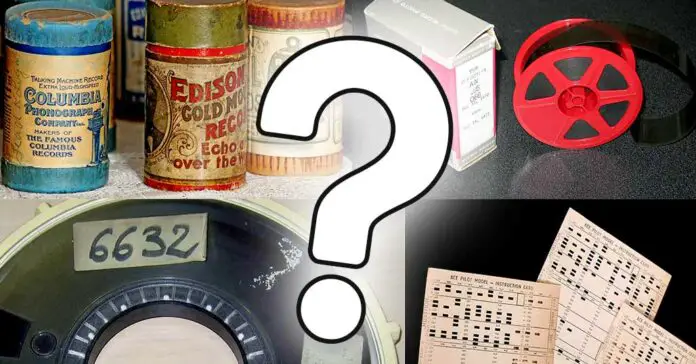Discover 8 fascinating old data storage methods, some of which you probably didn’t know existed! From wax cylinders to zip disks, learn about the unique ways people used to store information in the past.
Check out also: CRT Monitors Today – Pros & Cons + Availability
1. Wax Cylinders
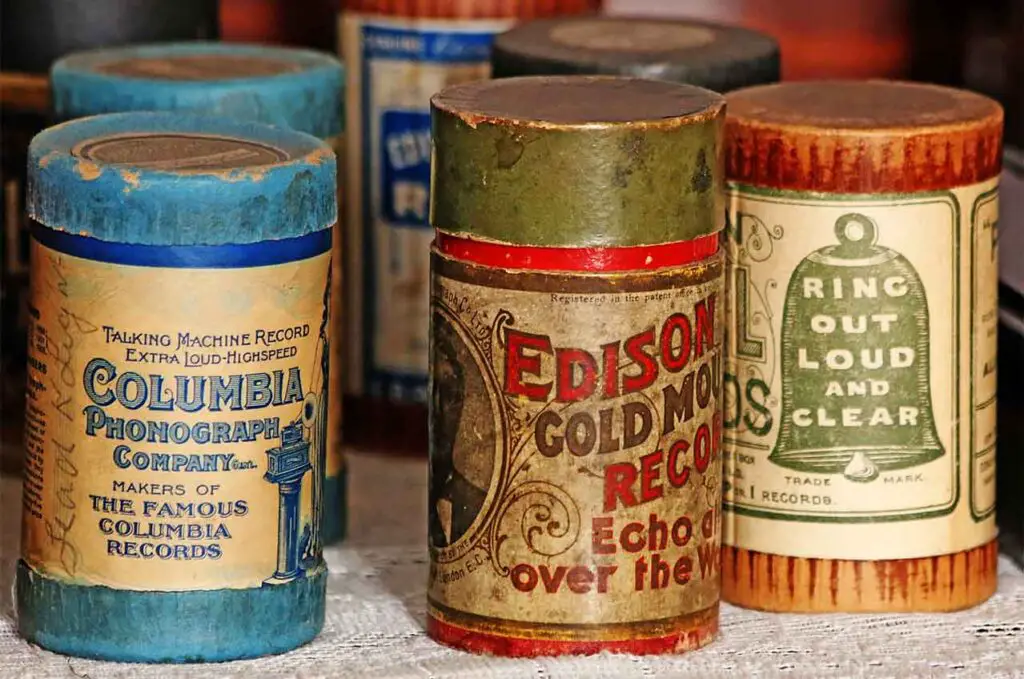
Wax cylinders were one of the earliest forms of commercial recording media, developed in the late 1800s. These cylinders were made of wax which was then etched away to create grooves for sound to be recorded. They were played on phonographs and were popular for recording music, speeches, and other audio.
Still, they were very much fragile and prone to damage, and their sound quality was pretty average. A wax cylinder with audio data stored on it could only be played around ~100 times until its deterioration would start to be noticeable in the final playback quality. Today, wax cylinders are a rare and valuable collector’s item, without real practical use.
2. Microfilm
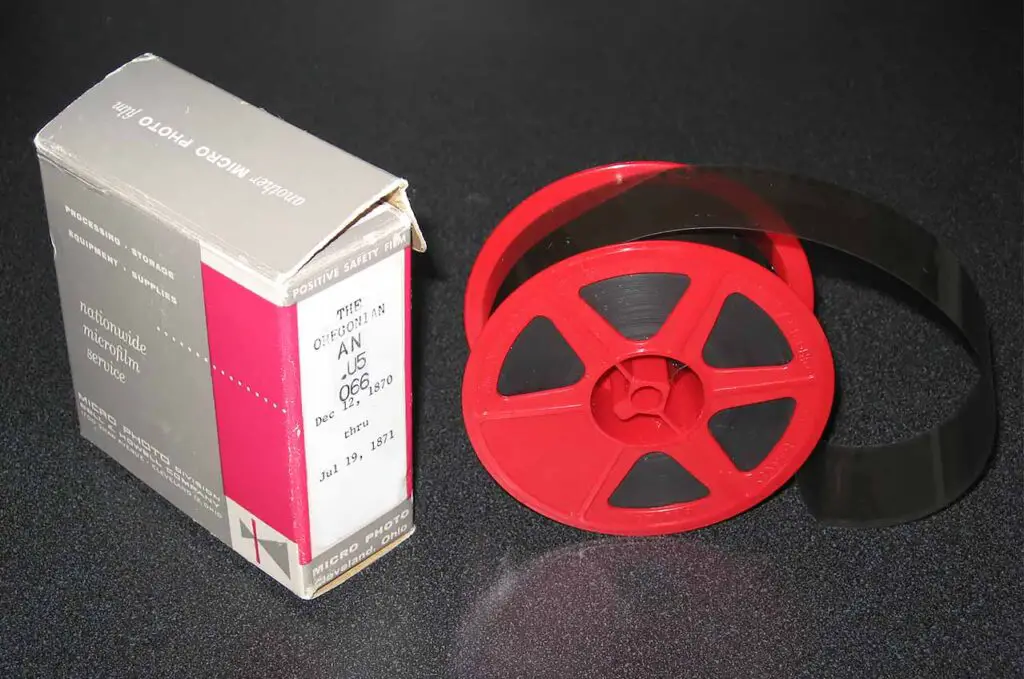
Microfilm is a method of storing information on a small roll of film. It was first developed in the XX century as a way to preserve newspapers. The film is coated with a layer of light-sensitive emulsion, and the information is recorded on it using a microphotography camera. Microfilm can store a large amount of information in a small space so it can still be considered a rather reliable way of physical data storage.
Microfilm was also used extensively in the military during World War II to store and transport sensitive information so you might have already heard of it if you’ve watched some action movies taking place in these times. It was a secure and efficient way to transport large amounts of data with a lowered risk of it falling into enemy’s hands. Today microfilm is still used in some industries, to store important documents and records, for example in some libraries and archives, for historical documents preservation.
3. Punch Cards
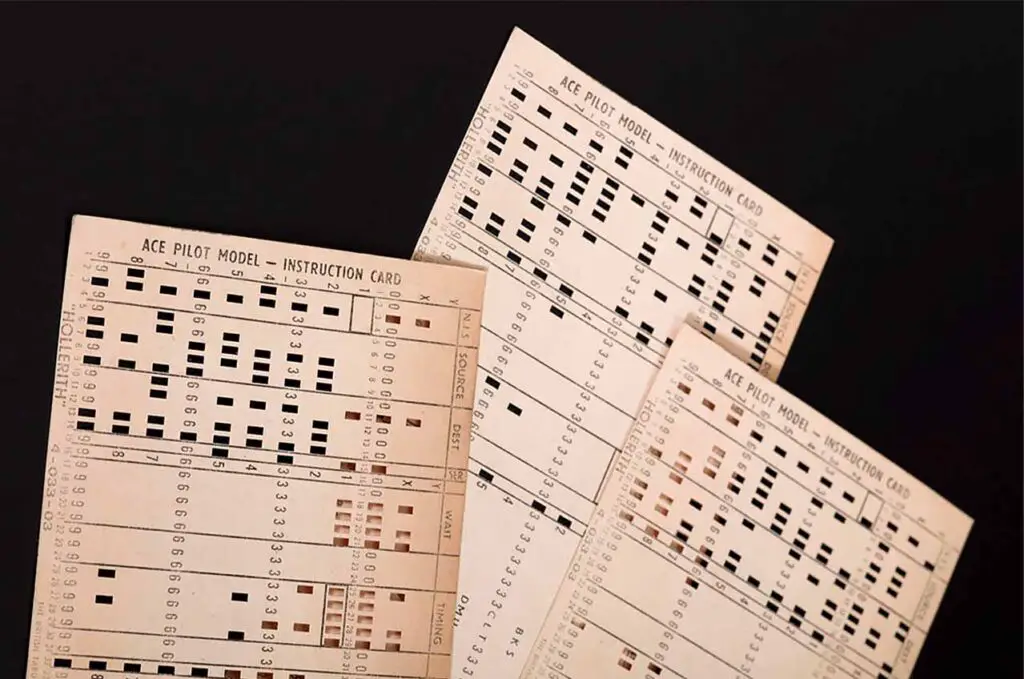
Punch cards were one of the earliest forms of data storage. They were used to input and store data on mainframe computers from the late 1800s to the mid-1970s. The cards were made of stiff paper and had holes punched in them to represent data. A special machine, called a card reader, would read the holes and translate them into data that the computer could understand.
Punch cards were widely used for data processing, especially in industries such as banking, insurance, and government. They were also used for early computer programming. In the end, punch cards weren’t that great of a storage method overall, including a limited amount of storage capacity and susceptibility to damage from dust and moisture. Punch cards were eventually almost fully replaced by magnetic tape and disk storage as time went by.
4. Magnetic Tape Storage
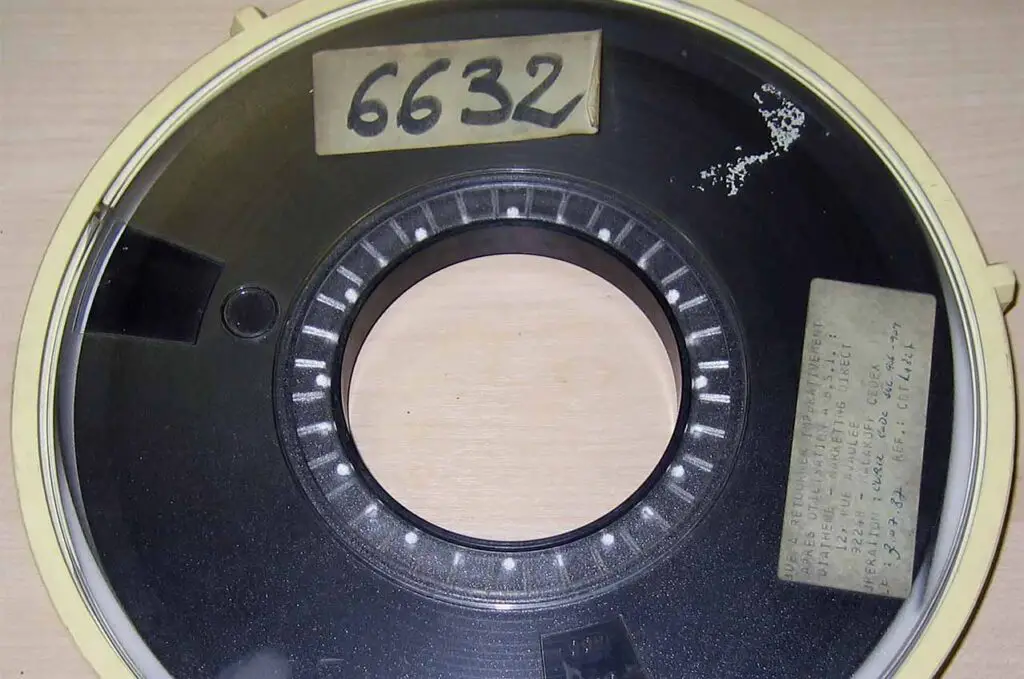
Tape storage was a popular data storage method from the 1950s to the 1980s. It involved recording data onto magnetic tape, which was then stored on reels or cartridges. Tape storage was used for both computer data and audio recordings alike.
Tape storage had several advantages over other storage methods of the time. It was relatively inexpensive and had a relatively high capacity for the time. However, it also had some drawbacks. Accessing data on tape was slow, and tapes were prone to damage and degradation over time so they had to be stored in a right way to be preserved for longer periods of time.
Despite its limitations, tape storage remained in use for many years. It was only in the end of the XX century, that it began to be replaced by newer storage technologies such as CDs and hard drives.
Learn to count in binary in minutes! – How To Count In Binary (Quick & Simple Guide)
5. Floppy Disks
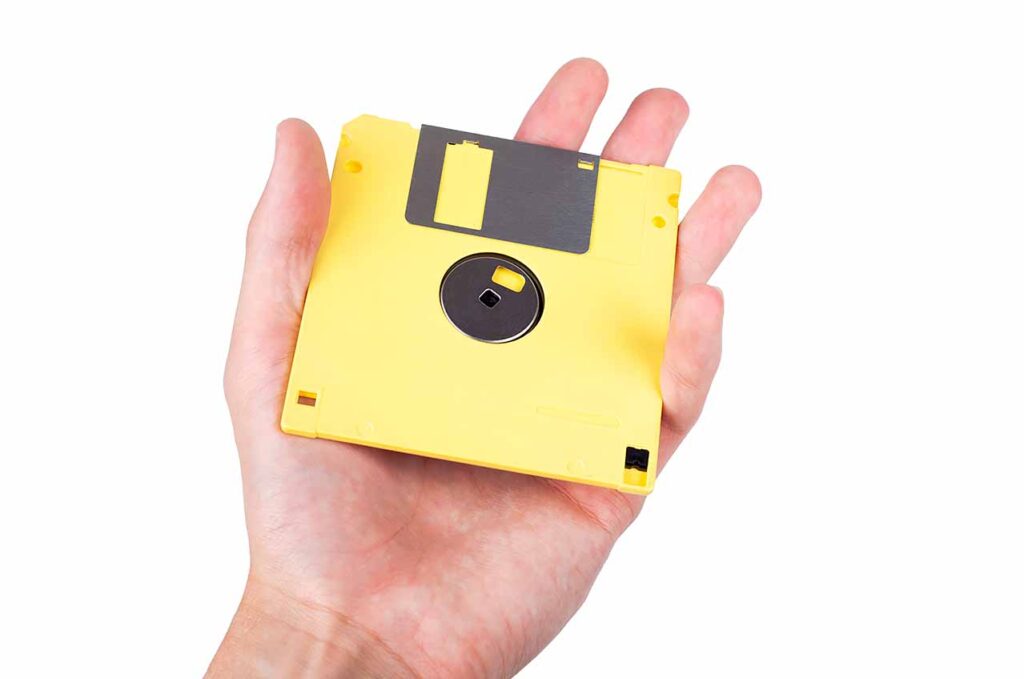
Floppy disks were a popular data storage method all throughout the 1980s and 1990s. These disks were made of a thin magnetic film and were available in various sizes, with the most common one being 3.5 inches.Floppy disks were portable and could store anywhere from 800 KB to 2.8 MB of data depending on the floppy model, which was a significant amount at the time. However, they were also somewhat fragile and prone to damage, and their capacity very quickly became insufficient as data storage needs grew over time.
Floppy disks are now considered obsolete and have been replaced by more advanced storage technologies, although there are still some machines out there that do feature in-built floppy disk readers built in.
6. VHS Tapes
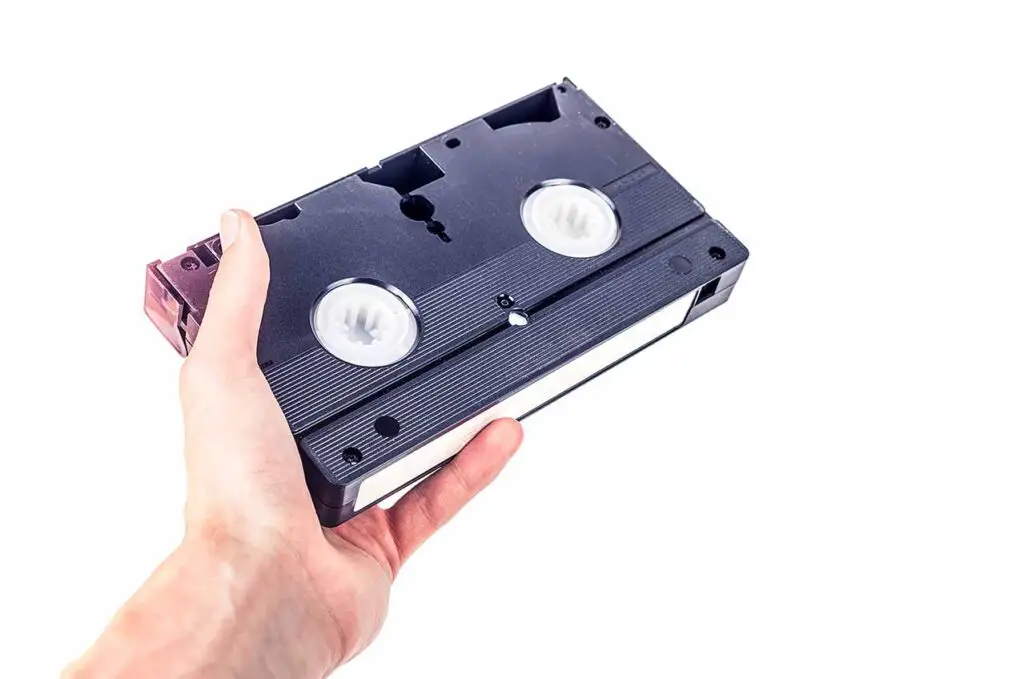
VHS tapes were a popular data storage method in the 1980s and 1990s, primarily used for recording and playing back video content. But did you know that they could also be used to store computer data? VHS tapes had a storage capacity of up to 360 minutes of content, but the quality of the data degraded over time and with each use.
VHS tapes were eventually replaced by newer and more reliable storage methods, such as CDs and DVDs. Today, VHS tapes are considered obsolete and are rarely used for any type of data storage. However, they are still used by some enthusiasts for recording and playing back vintage video content to give it that ultra-aesthetic 80’s video look!
7. MiniDisc
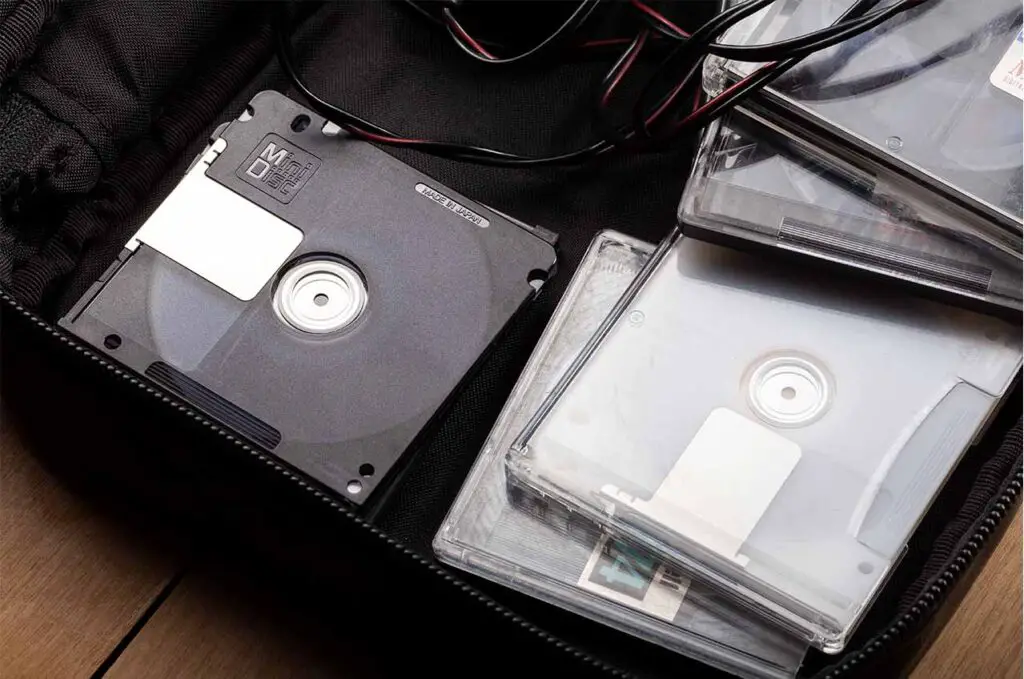
MiniDiscs were introduced in 1992 by Sony as a digital alternative to cassette tapes. They were small, portable, and could hold up to 80 minutes of audio. MiniDiscs used a magneto-optical disc to store data, which was read by a laser. They were much popular in Japan, but never gained that much of a widespread adoption in other countries including USA. MiniDiscs were used in audio players and voice recorders, and a plenty of different sound-related devices which needed a good amount of replaceable sound storage on board.
MiniDiscs were a cool innovation in their time, but their limited storage capacity and the rise of digital music made them obsolete rather quickly. However, they still hold a special place in the hearts of some collectors.
8. Zip Disks
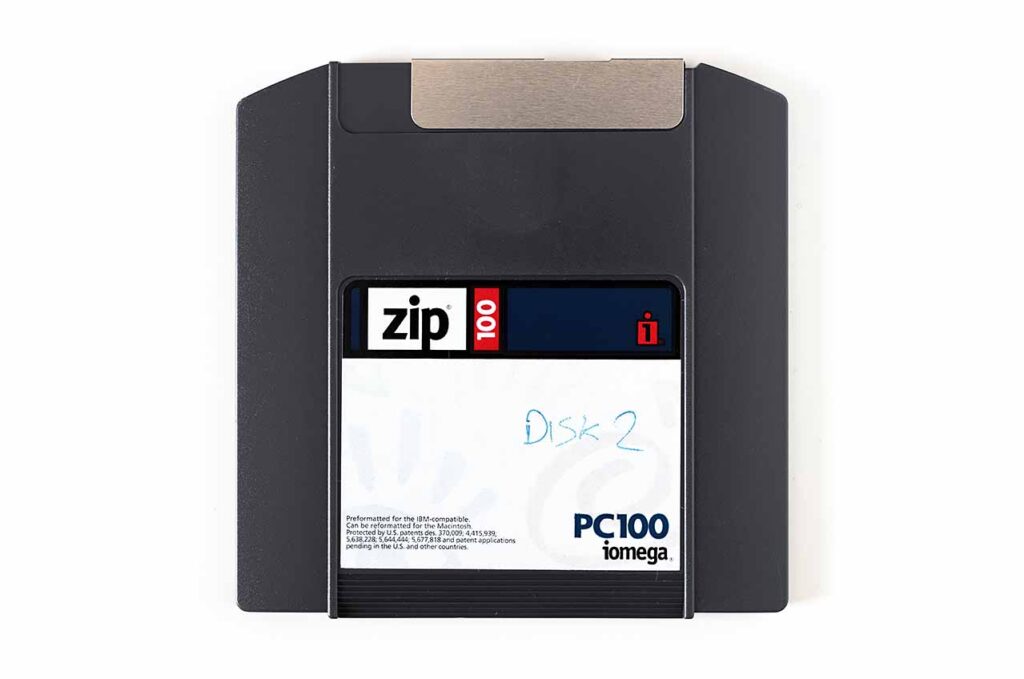
Zip disks were introduced in 1994 by Iomega, and were a popular form of data storage in the late 90s and early 2000s. They were similar in appearance to floppy disks, but had a larger capacity of up to 750 MB. Zip disks were often used for backing up important files and transferring data between computers. However, they were not without their issues – the disks were prone to data corruption and the drives themselves were known to fail.
As technology advanced and portable USB drives became more popular, Zip disks fell out of favor and are now considered obsolete.
You might also like: 10 Things You Should Know About Windows 95/98 Today

